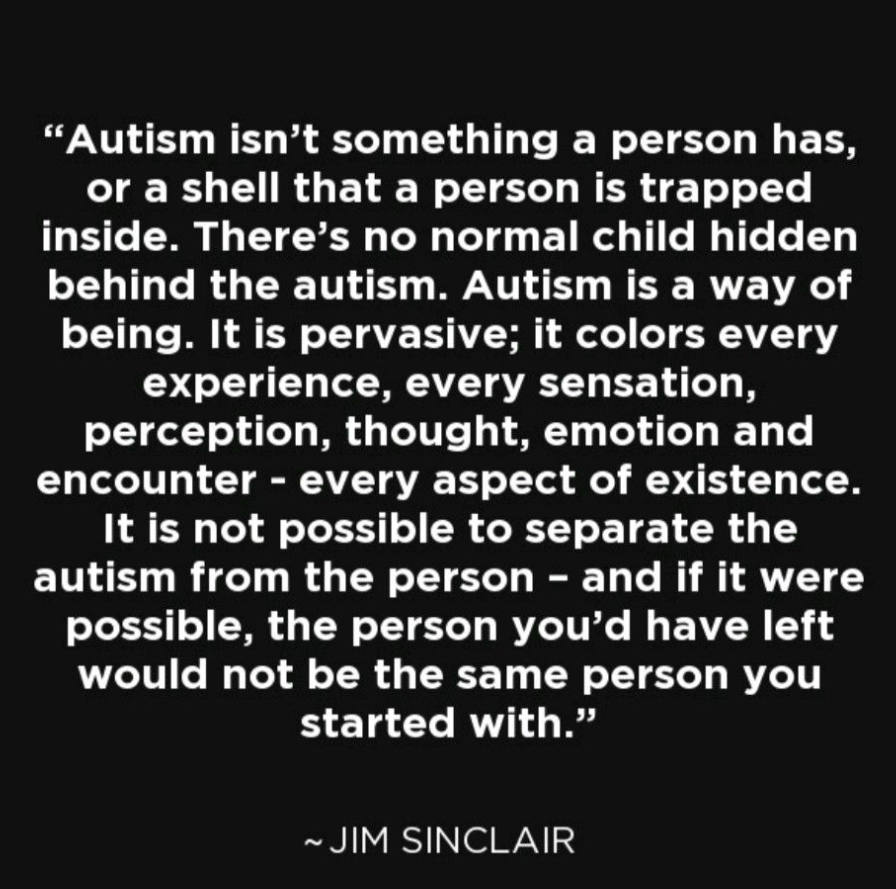What is Autism, anyway?
As you do your research into the Autistic community, you’ll find that is a difficult question to answer.
“Autism isn’t something a person has, or a shell that a person is trapped inside. There’s no normal child hidden behind the autism. Autism is a way of being. It is pervasive; it colors every experience, every sensation, perception, thought, emotion and encounter — every aspect of existence. It is not possible to separate the autism from the person — and if it were possible, the person you’d have left would not be the same person you started with.” - Jim Sinclair
One way to find out is to read the Diagnostic and Statistical Manual of Mental Health Disorders - 5th Edition (DSM-5) says.
What could be the problem with the DSM-5?
The big problem is that the criteria are written as a set of fixed, deficits-focused observations about the behavior of Autistic children. At no point does the DSM move into motivations or reasons for the behavior, and at no point does the DSM advocate that Autism can be anything apart from a pathology (and doesn’t discuss the impact of autism on teens and adults).
When you study the DSM-5 description of Autism, you see Autistic people presented as fundamentally alien and unable to relate to others.
However, to outline a more precise definition you run into a weird hassle: nearly everything you may say will have some Autistic person responding and saying “honestly the other is true for me!” Some autistics are hypersensitive to environmental stimuli, some are hyposensitive. Some can’t talk, some don’t stop talking. Some autistics love to socialize, a few hate it. Some have high support needs, some don’t have any apparent support needs. “When you’ve met one autistic person, you’ve met one autistic person” is the catch-phrase regularly touted.
And — we need to listen more to the ethnobiographical research about autistic people, by autistics. We know that Autistic folks struggle to relate to neurotypical people inside the methods that neurotypical people relate to each other (see my Double Empathy video). Autistic people may experience feelings extraordinarily intensely. Most of them have trauma from a lifetime of being misunderstood. Lots of us struggle with the lack of ability to identify and name our emotions (known as “alexithymia”) and many of us have co-occurring conditions (e.g. ADHD, epilepsy, anxiety, depression).
We know that the struggle to initiate, cultivate, and maintain friendships and relationships — all complex social skills — can be features, not bugs, of the autistic neurotype. The deficits-focused approach and pathologizing can work to get some services covered by insurance, since the medical model of disability still prevails (“your brain is different and that’s your fault”) versus the social model of disability. Lack of compassion, empathy and understanding contribute mightily to the disabling features of autism. What we want is for our autistic and other neurodivergent teens and adults to have a little gang of people who understand them, and keep them as friends.

